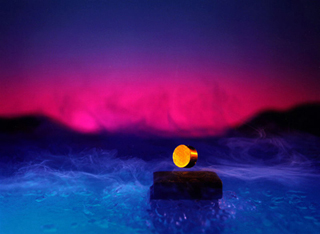
This photo shows the Meissner effect using a high-temperature ceramic superconductor and a powerful rare-earth magnet. Liquid nitrogen cools the superconductor to about 77 Kelvin, producing the magnetic cushion. (Photo courtesy of Pacific Northwest National Laboratory.)
Instructor(s)
Dr. James Livingston
MIT Course Number
3.A08
As Taught In
Fall 2005
Level
Undergraduate
Course Description
Course Features
Course Description
This Freshman Advising Seminar surveys the many applications of magnets and magnetism. To the Chinese and Greeks of ancient times, the attractive and repulsive forces between magnets must have seemed magical indeed. Through the ages, miraculous curative powers have been attributed to magnets, and magnets have been used by illusionists to produce "magical" effects. Magnets guided ships in the Age of Exploration and generated the electrical industry in the 19th century. Today they store information and entertainment on disks and tapes, and produce sound in speakers, images on TV screens, rotation in motors, and levitation in high-speed trains. Students visit various MIT projects related to magnets (including superconducting electromagnets) and read about and discuss the history, legends, pseudoscience, science, and technology of types of magnets, including applications in medicine. Several short written reports and at least one oral presentation will be required of each participant.


